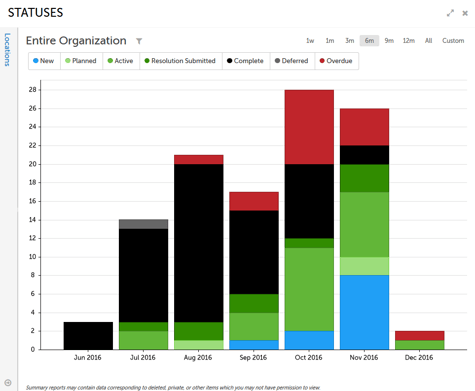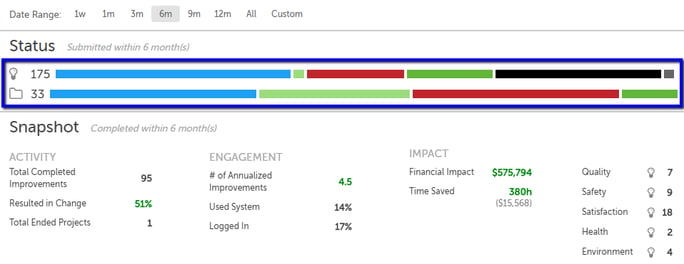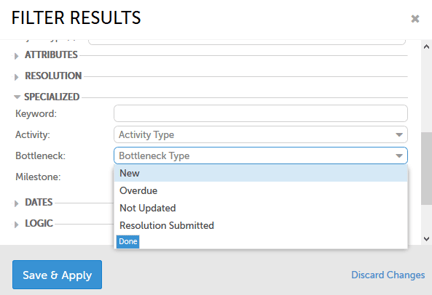Monitoring the vitals of continuous improvement - such as activity, engagement, and impact - gives you insight into the health of your improvement culture. Effective leadership keeps an eye out for anything that will harm those metrics in order to sustain the growth and momentum of improvement. There is nothing more toxic to the momentum, emotion, and ultimately the effectiveness of improvement work than out-of-control bottlenecks.
If you work in manufacturing, you’re probably already familiar with bottlenecks. A bottleneck is a constraint on workflow that reduces the efficiency and capacity of that workflow. Bottlenecks in improvement processes occur when there is a delay at one step that causes a slowdown in the progression of the improvement cycle.
Identifying these bottlenecks is critical at every stage of the improvement journey and can be tricky. But don’t worry; KaiNexus can help!
Bottlenecks in the improvement process typically occur at three points:
- New items - If more than a few days pass between when opportunities for improvement are first captured and when they’re assigned and work begins on them, you might have a bottleneck.
How does this bottleneck adversely impact your culture of continuous improvement? It’s simple, really. There is no more of an effective way for a leader to say they do not value their employees’ input than to let an Improvement sit in the New status for extended periods of time. It’s like sitting a suggestion box out on your desk, letting employees fill it up, and then putting it in a storage closet. - Overdue items - The second bottleneck is when Improvements are overdue by more than a few days.
Like the first bottleneck I discussed, this, too, signals that improvement work is not a priority and that people are not expected to complete their work on time. Furthermore, in KaiNexus, the overdue status triggers notifications. That means that the longer an item is overdue, the more times that notification is sent out. Leaving items overdue, therefore, makes people numb to those notices and makes KaiNexus a less effective continuous improvement platform as a whole. - Resolution Submitted Improvements - Once someone has submitted their Resolution for approval, the Improvement transitions to the Resolution Submitted status.
Like before, failing to respond to this status change for extended periods of time signals that the work was not that important in the first place and decreases future engagement.
All that being said, KaiNexus makes it easy to identify when and where these bottlenecks occur so that you can catch and remedy them right away before they reduce engagement and impact. Here are some of the ways you can spot them:

The Statuses Report:
This report displays the statuses of all Improvements created each month. Look for new, overdue, and resolution submitted Improvements from past months to spot bottlenecks.
You can even click any of the colored blocks to open a list of all Improvements from that month that currently have that status.
Snapshot Status Bar

The Snapshot status bars display the statuses of all Projects and Improvements submitted in the set location(s) during the set time frame. Look for a large number of new, overdue, or resolution submitted Improvements. This may be indicative of a bottleneck in your workflow.
As with the Statuses Report, you can click any of the colored bars to open a list of all Improvements meeting your set parameters that have that status.
The Bottlenecks Filter
We recently made it possible for you to filter a list of Projects or Improvements to include only Improvements which are caught in a bottleneck.
You can choose any combination of bottlenecks and will be asked to specify a time frame. For example, if you choose “New” and “More than 3 days,” you’ll see only new Improvements that were created more than three days ago. This is a handy trick if you’re interested in very precise bottleneck statistics.
How are you monitoring and responding to bottlenecks in your organization? We’d love to hear your best practices.


Add a Comment